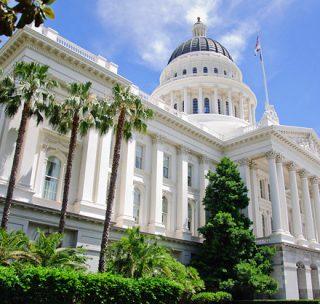Capitol Corner Update
Last November, Californians turned out in record numbers to vote in 2018’s midterm election. Although this election had a few races that included obvious front-runners, many national elections were contentious, as their outcome would overturn the republican majority in the Senate and the House. This increased voter turnout in many states, including California, hoping their vote would make a difference both locally and nationally.
California is historically a “blue” state with large urban areas that influence statewide elections. This election was no different, however, it might come as a surprise to many that Governor Gavin Newsom, is the first Democratic incumbent to succeed a democrat governor in over 100 years. The last time a democrat governor succeeded a democrat governor was in the 1880s. This year, Newsom ran against republican candidate John Cox who was endorsed by President Trump. Cox was able to carry over 25 counties in California, most of which are rural. Even with this victory, Cox lost to Newsom with only 38% of the votes.
CALBO members might be curious as to how the governor-elect will affect California’s future political dynamic. Looking back, Governor Brown has been a moderate-democrat in many ways and on various issues. Brown often prioritized issues based on the state budget and resources verses pursuing a more progressive platform. When big-ticket items arrived at his desk for passage, he would remain bipartisan and often refer to budgetary constraints as the reason for vetoing measures – democratic and republican bills alike. It will be interesting to see if Governor Gavin Newsom will approach legislation similarly.
Newsom has been historically liberal in his previous political positions, which could ultimately affect his future decisions in the governor’s office. Additionally, as an incumbent, he will be trying to create his own political legacy as governor of California. During his race for governor, Newsom highlighted issues such as affordable housing, education, and health care. As California’s governor, he will most likely focus his energy on these issues and use his political influence to highlight these issues in order to implement change. Newsom’s reputation as a San Francisco-liberal proceeds him, and it is anticipated that he will sign most legislation that arrives at his desk. As both the State Senate and Assembly remain a democratic majority, moving bills through the legisalture and on to the governor will likely be less cumbersome. As always, CALBO will be taking an active role in lobbying for our members and monitoring all bills introduced by the legislature.
It is important for CALBO to remain active in the legislative process through this transitional period. CALBO will continue to take strong positions on legislation that will affect our membership and your interests. This will include meeting with legislators and their staff, writing position letters to various bill authors, and providing testimony in policy committees. If you would like to learn more about CALBO’s advocacy efforts, please attend our Leadership and Advocacy Day on April 17, 2019 in Sacramento. You can also email Government Affairs Manager, Katie Almand, if you have any questions.

